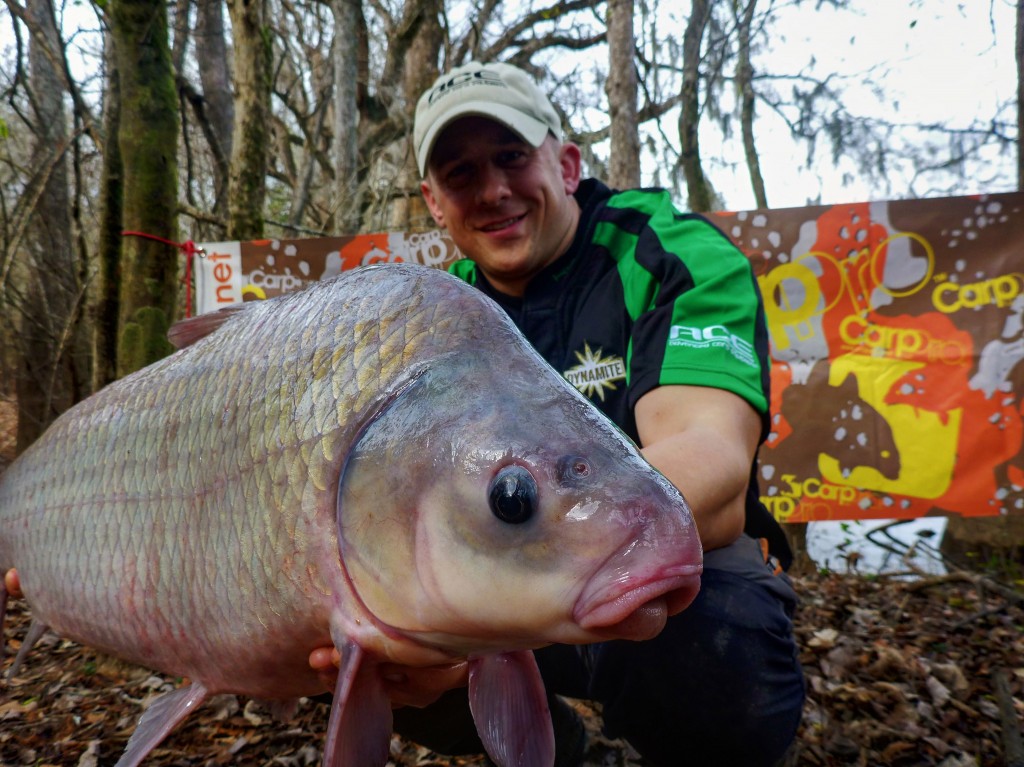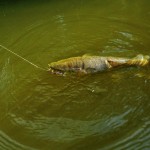As a South Carolina native I have spent untold hours stomping through every manner of marsh-laden, mosquito infested, heavily forested terrain possible, all in search of the ‘perfect spot’. Every angler recognizes my point – that ‘perfect spot’, which, given the right time and opportunity, would yield the moment that is an angler’s heaven – the swift, unmistakable jerk on the line, that adrenaline-inducing grab that might mean the catch of one’s dreams.
As my years of experience as an angler have unfolded, I’ve discovered the singular truth is this: the value of a body of water must and cannot be measured solely by the number of fish one pulls from its depths. As a boy (novice) fisherman, success was measured by the sheer number of fish that I happily unhooked from my lures. Now I see, instead, the inestimable ‘perfect spot’ – the one that whispers promises of a mesmerizing experience in the natural world that uniquely stimulates the mind, body and spirit. Spiritual, poetic, other-worldly? It may sound outlandish, but yes – that is, to me, the essence of the perfect fishing experience. Over the past year I have made several ventures into the quiet tributaries and oxbows of the Great Pee Dee river system, into some of the most purely serene and poetically beautiful places I’ve seen. It has certainly established itself as one of the premiere multi-species fisheries I have ever fished. General Francis Marion, during the American Revolution, utilized an area near the junction of the Pee Dee and Lynches rivers as his headquarters. The tangled, rainforest-like terrain enveloping the area proved a safe, nearly impenetrable haven for Marion and his ragtag militia. It also proved to be a nearly undiscoverable hiding place to the hapless British.
Today the Pee Dee River is scarcely utilized for ‘navigation’, but has become a critical source of electric power and public water supplies for the Carolinas. The Pee Dee River is home to several dams, constructed for the purpose of generating hydroelectric power. The opening and closing of these dams occasionally results in dramatic changes in depth and turbidity of South Carolina waters. Due to constant changes in depth, much of the Pee Dee river system is punctuated and surrounded by oxbow lakes which are frequently impossible to access – and are also loaded with fish. The lower part of the river, particularly below highway 378, is a designated scenic river, and rightfully so. The lower portions of the Pee Dee are primarily wild and filled with forests of tupelo, oak, and gum. Flooded cypress forests yield unique fishing opportunities accompanied by exquisite scenery. The river has no shortage of wildlife, and is home to alligators, beavers, deer and waterfowl, not to mention the occasional black bear.

Some of the tributaries include the Lumber, Little Pee Dee, Lynches, and the Black and Waccamaw Rivers. Many of these tributaries are navigable only by canoe or small watercraft. Low-hanging branches and cypress knees make many of these tributaries nearly inaccessible, but the isolated pools found beyond many of the obstacles can offer anglers some truly spectacular opportunities.
The abandoned channels partially dug out by early settlers have since formed into ‘lakes’. These lakes include Thomas Lake, Jordan Lake, Johnson Big Lake, Yauhannah Lake, Russ Lake, Graves Lake, and countless others. These lakes can be explored with small boats and are extremely popular with recreational and commercial anglers. The surrounding forests in the lower portions of the river become tidal swamp as the river is tide affected closer to the ocean.
Beyond the historical aspects and natural beauty of the Pee Dee River system is its outstanding fishing. As a multi-species enthusiast I am constantly in search of the next amazing spot in which to land fish like gar, carp, suckers, and bowfin. Rarely have I found a single place where it is possible to catch all of these fish. However, in my home state of South Carolina, there are areas of the Pee Dee River where simply tossing a nightcrawler to the bottom could be the ticket to an incredible bounty in terms of variety and size.

I first fished the Pee Dee River with Keith Cisney of USCarpPro; we targeted the smallmouth buffalo. The Pee Dee is one of South Carolina’s few bodies of water where buffalo can be captured in their natural environment. Though buffalo will happily occupy their time in the main body of a river, we concentrated our efforts on abandoned channels (lakes) where current flow was not a hazard to pack baits or chum slicks. On a calm day, the Pee Dee’s lake surfaces are popping with activity from buffalo, carp, gar and more breaking the surface. The numerous snags and roots below the river’s surface make bottom fishing uniquely challenging when angling for buffalo and carp. Because much of the river in South Carolina is tide-affected, areas with snags may be clear from one day to the next. We opted to fish lakes strategically avoiding most snags and found success capturing buffalo on corn puffs packed with a concoction of bread crumbs, soybean meal, and cream style corn. Areas pre-baited with range cubes, birdseed, corn, and an assortment of flavors, tend to draw interest from the river’s big buffalo and common carp, and assist in directing the fish into a particular zone. We spoke at length with a commercial angler who had fished the area for 25+ years; he claimed to have caught buffalo in excess of 60lb and many other species including the occasional Atlantic Sturgeon. I have, in various areas of the Pee Dee, succeeded in landing buffalo, common carp and grass carp.

The Pee Dee is also home to a massive population of bowfin, a favorite species of mine, and in my opinion the quintessential ‘rough fish’. On a recent carp and buffalo outing I observed a group of commercial anglers haul in a massive number of huge bowfin with a gill net. Anglers seeking to find this elusive swamp dweller need look no further than the swampy regions of the Pee Dee. I have enjoyed great success in catching bowfin in the margins of flooded oxbows and lakes around the Great Pee Dee, Little Pee Dee, and Lynches River. The bowfin of the Pee Dee can be found merely by visually scanning the glassy surface of its backwater swamps. Anglers seeking to capture bowfin in the Pee Dee system should do their research and key in on the shallow bayous and backwaters of the river clustered with cypress trees and other snags. As bowfin surface for air they, much like gar, inevitably reveal their location. I have had most success in the Pee Dee using cut shad under a sliding float placed near the broad base of submerged cypress trees. Because of numerous underwater snags, catching bowfin in the swampy areas of the Pee Dee can be very challenging.

As is often the case, where you find bowfin you are bound to find gar. The Pee Dee is simply loaded with longnose gar. Anglers would be hard pressed to find any current break or stagnant pools stemming from the main river that are not teaming with gar breaking the surface on a hot summer day. Capturing gar in the Pee Dee is relatively simple. A piece of cut bait or live shiner suspended a couple feet below a float will generally guarantee a quick bite. The longnose gar are abundant in great numbers in most calm pockets, eddies, and lakes along the swampy edges of the river.
The tangled, stumpy bottom of the Pee Dee is the ideal habitat for flathead catfish which comprise more than half the population of catfish species in the river. The Pee Dee is a premiere catfish location on a national scale much less in South Carolina alone. Though the river remains a mystery to most, those who fish the Pee Dee will swear by its quality as a catfish destination for monster blues and flatheads. On several occasions I have ended up with big blues and channel catfish at the end of my line while leaving cut shad on the bottom for bowfin. Anglers seeking to land large flatheads should concentrate on junctions and creek mouths where timber has accumulated during floods and tidal shifts. Live sunfish, eels, and herring work best at the margins of these snag clusters in which the flathead dwells. Because the Pee Dee moves at a fairly constant, considerable pace, anglers should position themselves behind logjams and other current breaks to place baits. Blue catfish can also be captured in these areas but anglers should focus on deep holes and ledges in the main body of the river, particularly at bends, where drifting cut shad or placing stationary baitfish on the bottom or suspended will pick up the most action.
As an active angler from the state of South Carolina I have often been in conversation with fellow South Carolinian fishermen. Oddly, the Pee Dee River is rarely brought up during these conversations. In general, the virtues of the Santee system, Lake Wateree or Murray are extolled by fellow anglers as being the best in-state freshwater destinations. Given my experience as a multi-species enthusiast, I am convinced that the Pee Dee river system deserves to rank high on the list of anglers in the Southeast who value the opportunity to catch numerous species of quality size in close proximity to one another. The Pee Dee River is unique in its natural beauty that represents southern outdoors to the highest degree. This river offers unique, rare opportunities to anglers who can capture 6 different species of fish in excess of 50 pounds in the same area, and creatures which have swum our native waters since the age of dinosaurs.

Article by David Graham, published in Fishing-Headquarters Online Magazine, Issue 20, September, October & November, 2014.











